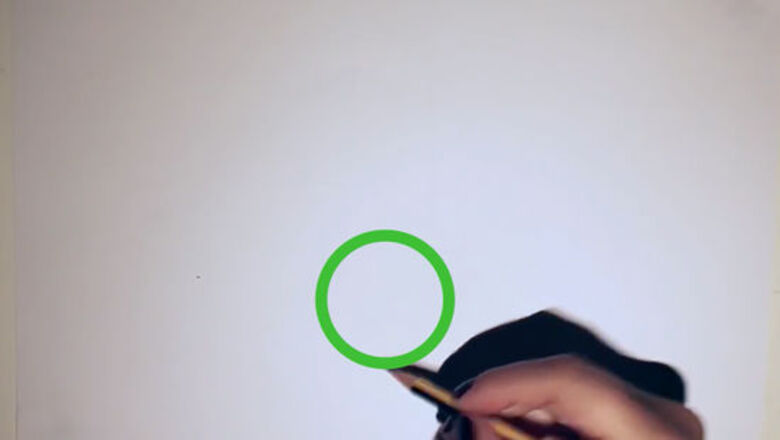
views
Drawing a Front Facing Nose
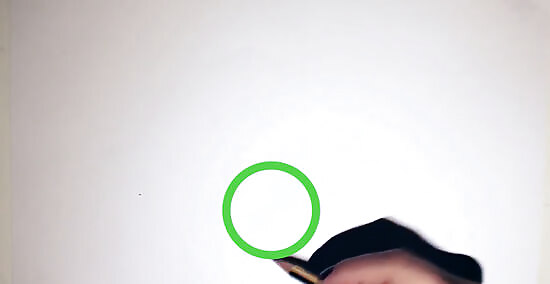
Draw a big circle in the center of your paper. This will be the guide for the rest of your nose, so the size of this will determine the size of your final nose. For now, draw it as big as you feel comfortable -- you can learn to draw new sizes later on.
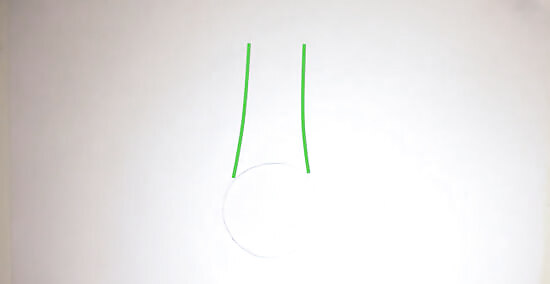
Add two vertical lines on the top of the circle. They should start just inside the edges so that the drawing looks a bit like an upside-down microphone.
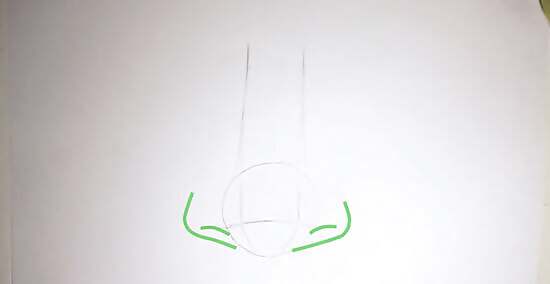
Draw two curved lines on either side of the circle to form the beginning of the nostrils. The first line extends from the lower third of the circle, curving downward. This forms the top edge of your nostril. The second line is a curvy L-shape, wrapping slightly around the nostril. This line forms the outside edge of the nostril. Repeat the drawing on the opposite side.
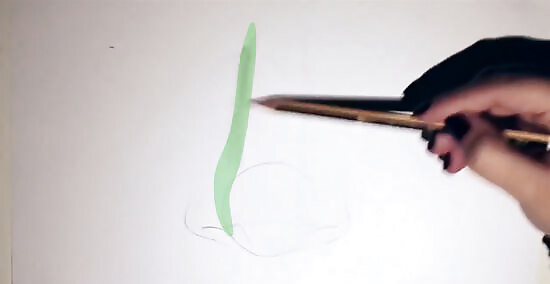
Lightly fill in some shading and guidelines around the outside of the nose. Connect the bottom of the nostrils lightly to the bottom tip of the circle. Draw a line through the bottom third of the circle, connecting the two nostrils (you'll be shading this in later).
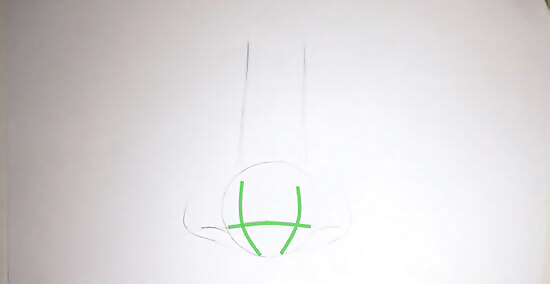
Create shading guidelines in the center of your circle. Draw two vertical lines from the top of the circle (where it meets the bridge of the nose lines) and connect them to the horizontal line 2/3rds of the way down. When you hit this horizontal line, turn the lines diagonally inward, so that they "follow" the curve of the circle back down. These are only guidelines, so don't worry about shaping the nose perfectly yet. You'll do this through shading.

Shade all along your guidelines. The lines you drew are there to provide the blueprint for your shading. Simply start with light shading all along the lines, using thicker shading for bigger noses. Once the light shading is done, use a harder pencil and start shading even darker, sticking closer to your shade lines than before. This is your chance to shape the nose, so break from the guidelines where needed to get the design you want. From here, you can either: Find and keep filling in the dark spots -- such as inside the nostril. Add a little white to the highlights, like the tip of the nose or the bridge. Use a picture to help your shade if you're just starting. That said, your guidelines should give more than enough help.

Use shading to determine the type and shape of your nose. Lightly rounded edges and softer shading generally leads to a more feminine nose, where hard edges and sharp lines lend the drawing a more masculine flavor. Keep practicing to learn how to form the noses just how you like.
Drawing a Side-View Nose

Start with a big circle in the middle of the page. A normal circle is your guide, once again, for forming the nose. Almost all of the steps are nearly identical to those outlined in "Front-Facing Nose," but they are slid to the left or right to put the nose in profile.
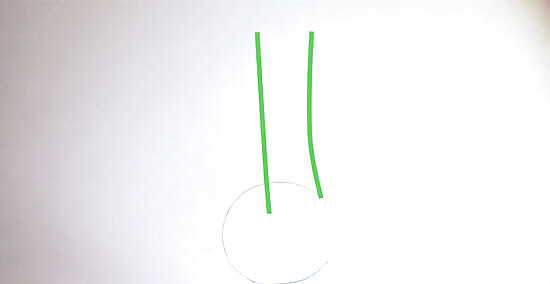
Draw two long vertical lines on top of the nose. The first one will be about dead center, the second almost on the far right edge of the circle. Note that, if you want to draw the nose from the other side, you simply flip these lines. Both lines should continue a bit into the circle.

Draw a horizontal line through the bottom 1/3 of your of your circle, slid slightly to the left. This line should be the length of your circle, but shifted over so that it doesn't fit. The left side of the line will leave the circle, the right side won't touch the right edge.
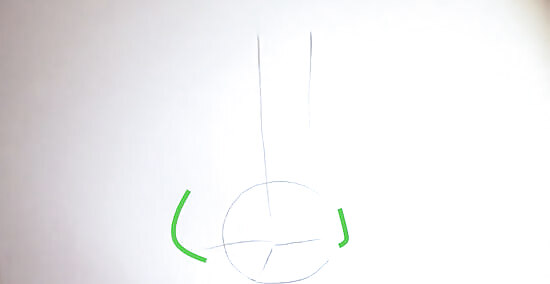
Draw in a curved, L-shaped nostril on the left side and a smaller one on the right. Put your left nostril at the end of your horizontal line, then draw a concave line for the top of the nostril right where your horizontal line ends. When the nose is turned, you barely see the far nostril, so a little backward "J" pressed close to the circle should be enough for the right nostril.
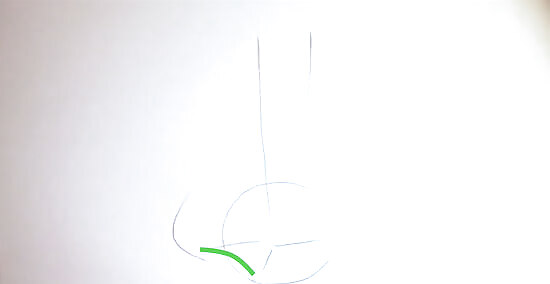
Add a diagonal line where the vertical line meets the horizontal one. This line will be the underside of your exposed nostril. The line extends diagonally from the horizontal line you drew to the left, towards the bottom of the left nostril. It will create a little triangle on the left side of your circle.
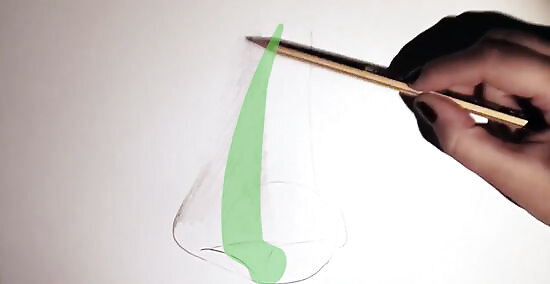
Start shading along your guidelines. Again-- anything near the lines is shaded in heavier than anything far away. Start with light, easy shading around the lines, filling in the blocks of shading and the general contours of the nose. Then use a thicker, harder pencil to add in your blacks and darkest patches along your guidelines, paying particular attention to the nostrils and the long vertical lines forming the bridge of the nose. Keep the space between the two vertical lines and the space above your horizontal guideline mostly white.
Drawing Noses in Profile
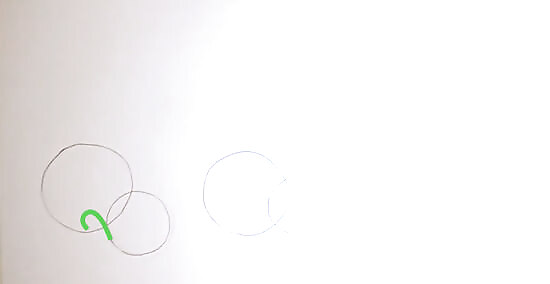
Draw a big circle, then a smaller, overlapping circle to the right of the big one. The first circle forms the profile of the nose, and the second is the profile of the nostril. You can slide this second circle up and down to change the final shape of your nose easily.
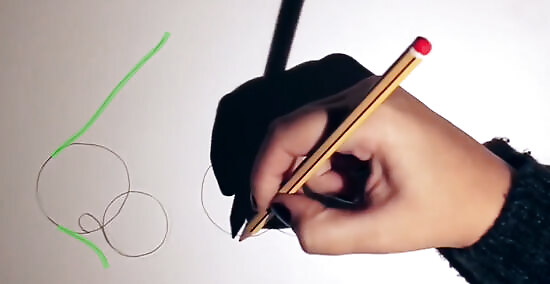
Add a little "hook" extending off the smaller circle and into the big one for the nostril. This little hook should naturally come off the edge of the smaller circle, the curl back on itself inside the larger circle. This is the outline of the nostril opening.
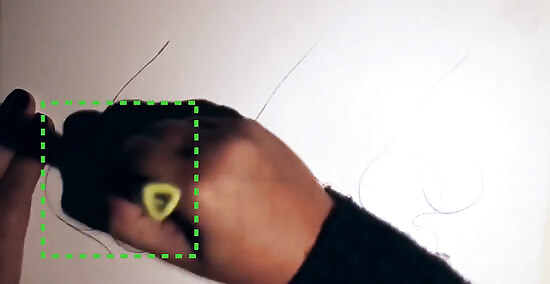
Add lines for the bridge of the nose and top of the lips. The first line is a diagonal line coming off the edge of your bigger circle, the second curls slightly off the bottom of the bigger circle. These attach the nose to your face -- look in the mirror if you're unsure what parts these correspond to on a real face.

Erase the top half of the guiding circles. Look at a real nose in profile -- the semi-circles of shading around the nostril end when the nostrils start to meet the bridge of your nose. While you'll be shading along the guidelines, like the other tutorials, you don't need all of them.
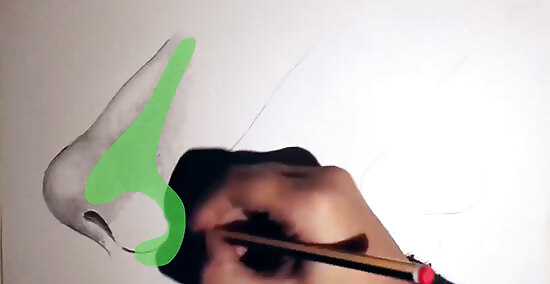
Use your guidelines to start shading. Once again, you want to focus on the guidelines to tell you where to shade. Pay particular attention to the outside edges around the nostril, filling it in as dark as you can to get a nice, dramatic shape.
Fill in the highlights with white. The three main areas to highlight in a profile nose are the just above the tip (the rounded bulb at the end of your nose), the top of the bridge, and the small circle of light at the center of your nostril (the part of the nostril closest to the "camera" in your image).




















Comments
0 comment